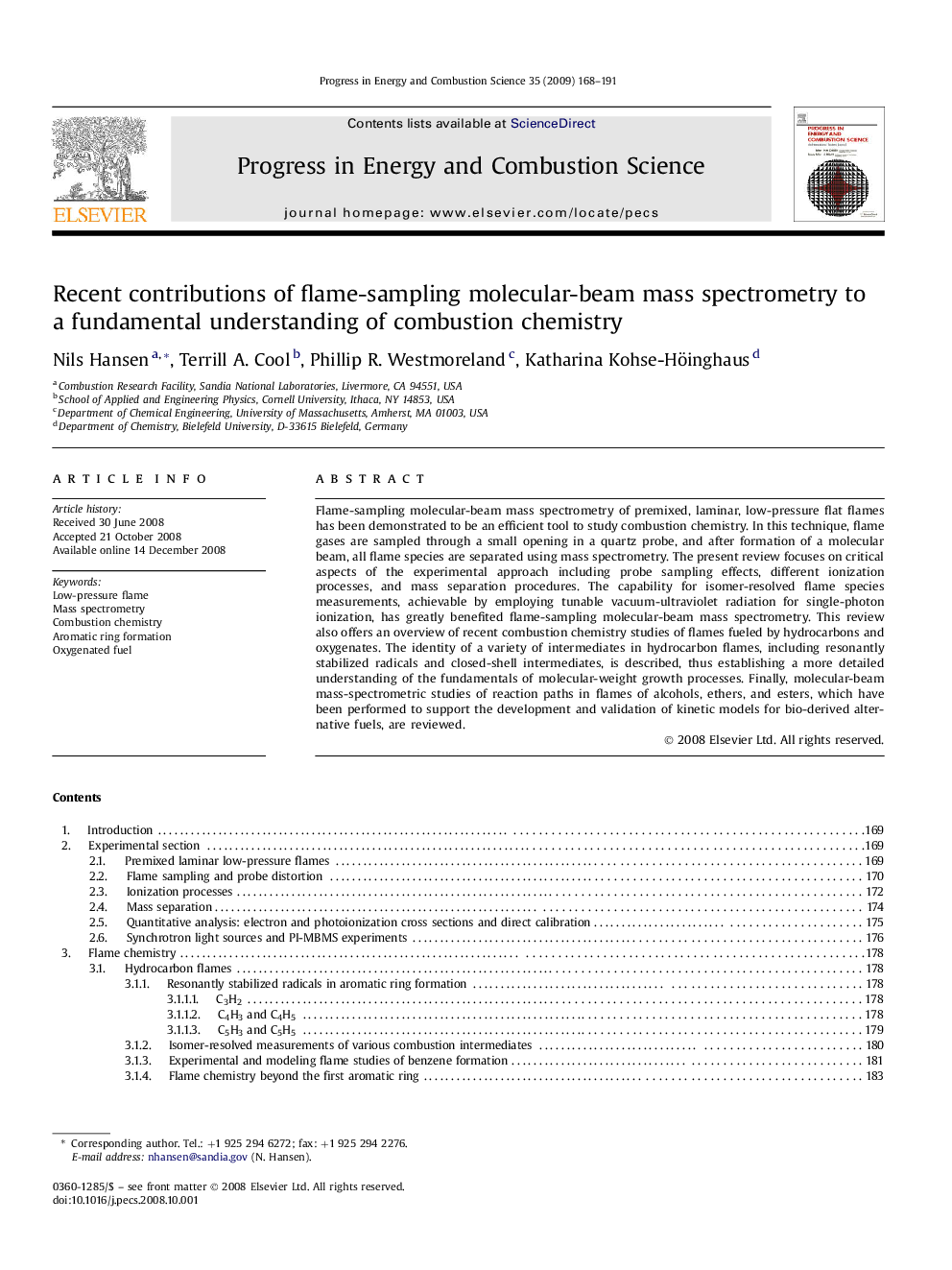| Article ID | Journal | Published Year | Pages | File Type |
|---|---|---|---|---|
| 241796 | Progress in Energy and Combustion Science | 2009 | 24 Pages |
Flame-sampling molecular-beam mass spectrometry of premixed, laminar, low-pressure flat flames has been demonstrated to be an efficient tool to study combustion chemistry. In this technique, flame gases are sampled through a small opening in a quartz probe, and after formation of a molecular beam, all flame species are separated using mass spectrometry. The present review focuses on critical aspects of the experimental approach including probe sampling effects, different ionization processes, and mass separation procedures. The capability for isomer-resolved flame species measurements, achievable by employing tunable vacuum-ultraviolet radiation for single-photon ionization, has greatly benefited flame-sampling molecular-beam mass spectrometry. This review also offers an overview of recent combustion chemistry studies of flames fueled by hydrocarbons and oxygenates. The identity of a variety of intermediates in hydrocarbon flames, including resonantly stabilized radicals and closed-shell intermediates, is described, thus establishing a more detailed understanding of the fundamentals of molecular-weight growth processes. Finally, molecular-beam mass-spectrometric studies of reaction paths in flames of alcohols, ethers, and esters, which have been performed to support the development and validation of kinetic models for bio-derived alternative fuels, are reviewed.
